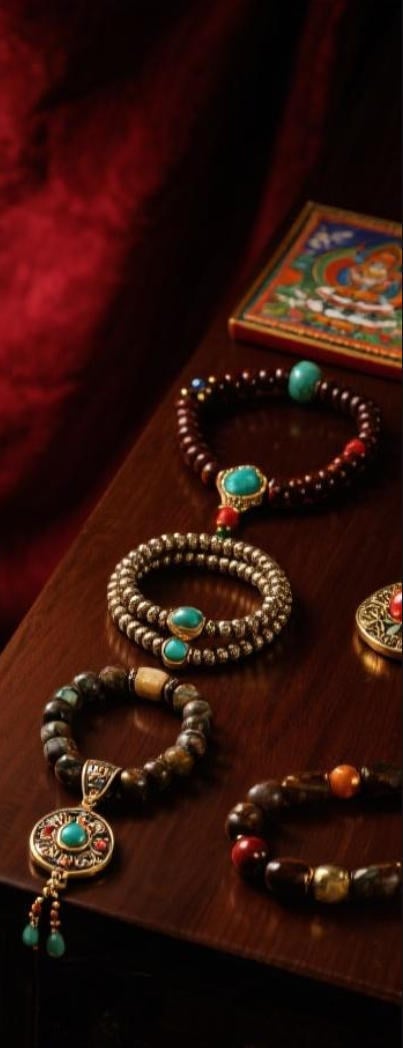
Within the intricate fabric inside Tibetan faith systems stand two meaningful icons: the colorful thangka and consecrated bodhi token. Separately, in personalized means, provide access to spiritual knowledge. The thangka, a detailed mural, displays revered icons, sacred graphics, or ancient stories, offering meditation guidance.
Yet, the bodhi bead, often crafted from fine gems, hardwood, fruit stones, or calcium deposits, is a tangible reminder of Buddha's transcendence under the bodhi tree. Manipulating the beads fosters mental clarity.
- Together, the thangka and the bodhi bead embody the synergy between expression and belief. They offer a tangible link to the traditional insight of Tibetan Buddhism.
Stories Told by Camel Skeletons
Amidst long-forgotten periods, historic treasures whisper tales regarding a world long vanished. These are not sparkling objects of lost empires, but straightforward camel bones sculpted with inscriptions that unlock the stories of a bygone cycle. Each bone holds the echo emanating from a life lived, a journey completed, and a connection to the venerable wisdom which encompasses us all.
- Such relics
- Treasures
- Are
Exploring the Mystical World of Thangka Art
Tangkas are vibrant paintings on canvas, meticulously crafted by Tibetan artists to depict hallowed figures and scenes from Buddhist literature. Each detail within a thangka is laden with interpretation, forming a complex tapestry of visual narratives that guide the viewer on a introspective journey. The chromatics used in thangkas are not merely aesthetic choices but carry essential connotations, representing different aspects of the Buddhist teachings. From the calm figures to the intricate designs, thangkas offer a peek into the rich world of Tibetan Buddhism, inviting us to meditate upon its truths.
- Conventional thangka art often depicts key Buddhist figures such as Buddha Shakyamuni, Bodhisattvas like Avalokiteshvara and Manjushri, and enlightened beings from various factions of Tibetan Buddhism.
- Through these representations lies a wealth of knowledge that can be accessed by those who examine the symbolic language of thangkas.
Bodhisattva's Path to Enlightenment: Embodied in Beads and Bone
Upon the winding road to transcendence, the Buddha harnessed insignia imbued with profound significance. All bead and material held within them the fundamentals of his doctrine, revealing glimpses into the form of reality. By way of their figure, the Buddha expressed profound revelations that surpass the realm of earthly perception.
From the devotional beads, crafted from special materials, dispersed vibrations that echoed with the refined waves within. The matrix of a individual, meticulously transformed into charms, served as tangible tokens of the impermanence essential to all phenomena.
Thangkas: Windows into Himalayan Spirituality
Thangkas radiant paintings on cloth serve as dynamic representations of Himalayan spirituality. These intricate works of art, meticulously created with refined brushstrokes, depict a vast array featuring Buddhist deities, mandalas, and scenes from holy scriptures. Each thangka is a contemplative aid for meditation and contemplation, offering wisdom into the profound teachings of Buddhism.
- They are often used in ritual ceremonies in the context of
- expressing states of spiritual awareness.
- Thangkas operate as not merely decorative works but rather gateways into the rich and compelling world of Himalayan spiritual traditions.
Bodhi Beads: A Journey Through Mindfulness and Compassion
Each orb on a bodhi bead mala whispers tales of ancient wisdom, guiding us on a venture through the tranquil waters of mindfulness. As we seize these intricately shaped beads, our fingers trace the contours of distinct one, anchoring our attention in the present moment. The gentle substance of the beads against our palms serves as a tangible reminder to respire, fostering a sense of peace.
- Every time bead that passes between our fingers, we nurture compassion, extending it first to ourselves and then outward to the world.
- Spiritual doctrines teaches us that mindfulness is a skill that requires patience and perseverance.
Utilizing the rhythmic repetition of mantra or simply the mindful noting of the beads, we disengage from the relentless chatter of the mind.
The practice utilizing bodhi beads is a subtle invitation to renew our connection with ourselves and the world around us.
Soulful Creation: Camel Bone Bracelets Enhancing Spiritual Progress
Determination acts as a profound catalyst in our lives, shaping our experiences and guiding us towards our fated course. When we combine this intention with the old knowledge of crafting a camel bone bracelet, we create a potent synergy that can intensify our spiritual growth.Camel bone represents sacred significance, representing stamina. Its natural beauty and vintage attractiveness serve as a constant reminder of the fundamental dynamic within each of us.Through mindful selection of bones, instill intentions into the creation. With every knot or connection, we implant our hopes, dreams, and aspirations for spiritual evolution. This act of creation becomes a reflective routine, synchronizing us with our inner wisdom and guiding us on a quest for enlightenment.- Let the natural hues and textures of the bone guide your vision.
- Picture your goals interlaced in the bracelet’s form.
- Charge the completed bracelet under the moonlight or sunlight to amplify its energetic properties.
The Fascinating Story of Camel Bone in Buddhism
In the rich tapestry throughout Buddhist tradition, artifacts often hold profound symbolic meaning. Among these varied objects, camel bone stands out as a exceptional and engaging element. Amidst history, this material has been utilized in the crafting during various Buddhist items, each imbued with specific implications.
- Considered as a symbol of resilience and strength due to the camel's ability to thrive in harsh environments, camel bone often symbolizes spiritual fortitude.
- Coupled with, the color and texture with camel bone are believed as some to hold auspicious connotations, denoting purity and serenity.
Accordingly, camel bone has become a esteemed part of Buddhist custom, serving as a tangible nexus to the profound teachings involved in this ancient faith.
Thangka Masterpieces: Narratives in Color
Within the ethereal realm of Tibetan Buddhism, Thangka paintings emerge as sacred portals to enlightenment. These magnificent works, meticulously crafted by skilled artists known as thangkapa, depict a myriad featuring vibrant deities, celestial beings, and mythical creatures. Each brushstroke imparts profound spiritual significance, narrating ancient tales and philosophical ideas.
- Showcasing a vast library of Buddhist iconography, Thangkas serve as both devotional objects and instructional tools. Loyal practitioners gaze upon these paintings during rituals and meditations, seeking to enhance spiritual wisdom.
- Richly detailed with intricate details featuring a vast array of vibrant hues, Thangkas are considered windows into the divine. Each individual painting acts as a symbolic representation of the Enlightened One's teachings and the path to liberation.
By way of their striking imagery and symbolism, Thangka paintings offer a glimpse into the rich theological traditions of Tibet. They are a testament to the enduring elegance of Tibetan art and its profound ability to inspire.
Embracing the Duality: Thangkas and the Cycle of Life and Death
Thangkas, the richly painted Tibetan scrolls, present a deep contemplation on the ephemeral character of existence. Each intricate sketch depicts deities and beings engaged in the continuous passage of life and death, a symphony of birth, growth, impermanence, and reawakening. The artists skillfully blend these concepts within the thangka's sphere, highlighting the cohesion of all things. Through vivid icons, they invite us to deliberate on our own existence. The cycle revolves, a sequence of coming and going, spotlighting the preciousness of each moment. By embracing this duality, thangkas teach us to appreciate the beauty in both life's joys and sorrows.Chains of Spirituality: The Significance of Bracelets in Buddhist Practice
In the intricate tapestry of Buddhist practice, seemingly minimalist objects often hold profound meaning. Among these are bracelets, which serve as tangible tokens of devotion and commitment to the way of Buddha. Worn on the wrist, a bracelet works as a constant reminder of one's aspirations and objectives. It can mirror the impermanence of life, inspiring practitioners to remain centered in the present moment. Some bracelets may contain sacred marks, such as mantras or the names of Buddhas, which are regarded to draw in positive energy and defense. Others might be made from ingredients with spiritual significance, like sandalwood or lotus seeds, boosting the bracelet's effect. Ultimately, the significance of a Buddhist bracelet rests far beyond its physical form. It becomes a powerful yoga life tool for prayer, a inspiration to live in harmony with the teachings of Buddha, and a manifestation of one's unwavering devotion.